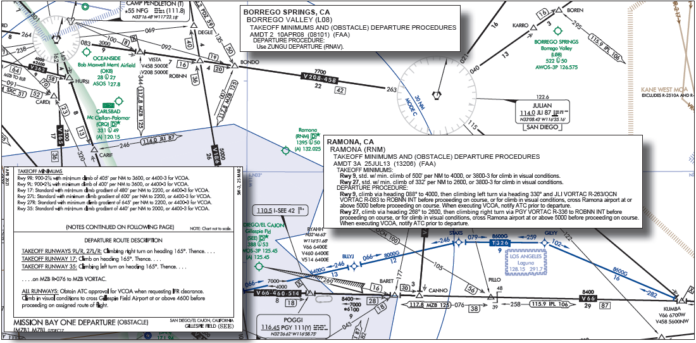Gimme More Vasquez
Your May issue had “Surface Charts” by Tim Vasquez. This outstanding article has been long needed. I found it highly informative and I loved it.
I am a former USAF pilot with 4500 hours total time, now mostly civilian. This is the type of information I find most helpful and valuable.
Please provide more of this kind of information. (I note that the June issue includes an article on radar, also by Tim Vasquez.) Thanks.
Tom Watkins
Gig Harbor, WA
Most months we have a WxSmarts article written by Tim Vasquez. He’ll occasionally weave in an article that analyzes a particular accident primarily with an eye on the contributions the weather made and what the pilot might have done differently. But, yeah, Tim keeps us fed with useful details about weather that are uniquely targeted at pilots.
Didn’t Like the SimChal
May’s Sim Challenge was such a poorly written article to try on a flight simulator that I had trouble following the round robin path Jeff talks about. He should have described the start-middlestart airports first and then the route he wants us to try.
As an instrument (advanced) student, I was lost, but I talked to my instructor and he was somewhat confused. It took us a while to figure it out so imagine this sitting in a plane with a meter running and trying this.
Perhaps it’s fine for those veteran IFR pilots, but for a new/unfamiliar pilot, this was more confusing than ever. Next time, have a new pilot or a student try this before you print it. I expect better from Jeff and even more from the editorial staff.
JT (anonymous)
United States
Well, as the magazine masthead says, this is targeted at the “accomplished pilot.” We make no apologies that some of our material can be beyond a student, even an instrument student. That said, we welcome students working to expand their capabilities, as we offer plenty of material your instructor probably won’t cover.
We’d also point out that these challenges aren’t designed for you to take to the sim without some significant preparation and briefing—just like you should be doing before any actual flight in an airplane.
If you want simpler sim exercises to help you learn the basics, or even the advanced aspects of instrument flying, there are books out there that offer page after page of exercises—boring exercises.
If, on the other hand, you want to be challenged (Note the article tag in the top-left of the first page, “Sim Challenge”), then these quarterly exercises are for you. If you manage to safely, legally, and properly complete one of these on the first try, please let us know. We’d like to enlist your assistance in writing them. Even their author, Jeff Van West, an experienced and knowledgeable instrument pilot as any of us, fails these the first time around—sometimes the second. And he’s writing them.
So, the purpose of these challenges is not a simple exercise in the sim. It’s to stretch you so that, should you ever encounter anything remotely similar in real life, you might not bollix it so badly on the first attempt.
To your particular point that you couldn’t follow even the routing, we reread the article and it’s clear to us that you depart Ramona, fly to Borrego Springs, then to Gillespie, and back to Ramona. Although we do show some of this with the charts, we also make the point that you’ll need more charts than we can show. Along the way you’ll be challenged by difficult approaches, some interesting choices, SIDs and obstacle departures. Maybe next time Jeff will throw in a failure or two, in case this was too easy.
How Can That Be?
Prepping for a trip to KWWD in NJ, I was briefing available approaches, and noticed something I couldn’t explain on my own about the minimums published for the RNAV 28. The Category A mins for the LPV are 646-2., LNAV/VNAV mins are 615-2., and the circling and LNAV mins are 558-1. I could see how they might be lower if the category mix was different (Straight in Cat D vs Circling Cat A, for example), but I can’t explain why less precise approaches have lower—not higher— minimums. Can you enlighten me? Thanks for such a great publication!
Dan Raneri
Boston, MA
Our TERPSter initially said, “Pretty sure that shouldn’t happen.” But, after some research he stated, “This is currently allowed (though rare), and results from differing obstacle evaluation areas (OEA) for different approach types. AIM 5-4-5.f. says circling can’t be lower than the straight-in LNAV mins but doesn’t address LPV or LNAV/VNAV. It probably should. As it stands you could say you’re circling, fly the LPV glide path down to circling mins, then land straight-in. That completely negates the safety margins from the different OEAs.”





